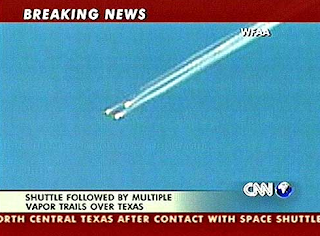

And that was what ultimately doomed the crew. And it wasn't until the very end that they informed the astronauts 'cause they figured it was going to come up in a press conference. And so the manager said, fine, we'll just keep going with the mission and not tell anybody about it. And NASA asked the engineers, do you know it's a problem? And they said, well, we can't be sure. And with Columbia, it was the piece of falling foam that hit the vehicle. And that hubris always seems to catch up with us. Challenger - routine launch and landing, no problems there. I mean, if you talk to historians, who are much better at this than I am, they'll say, you know, the Titanic, it can't sink. SIMON: Twenty years later, what have we learned about that day? What happened there in the sky? And what might have prevented it?ĭUGGINS: Well, you know, it's funny. And it was at that point that I found a NASA manager, who just said, what happened? And I said, lost an orbiter.

And two minutes came and two minutes gone and no sonic booms. And there's a big digital clock that I watch while I'm working on my laptop. Because two minutes before touchdown, you hear a double sonic boom - boom, boom - off the shuttle. That was the shuttle deteriorating, but everybody just thought it was an equipment problem. So what happens is there was some bad radio communication. And everything happened exactly by the numbers, as you say. SIMON: There was almost no sense of mystery, yeah.ĭUGGINS: There we are. SIMON: I mean, we should explain, it was almost routine. And I was already writing my first post-landing spot for the newscast unit. But for me, I was at the Kennedy Space Center, as you know, and at the runway, waiting for Columbia to land. There was the very - you know, the video of, like, the spacecraft breaking up. SIMON: And what are your memories of that day?ĭUGGINS: For me, it was more of what I heard rather than what I saw. How about that? And we both had a chuckle. And I just said, well, you know, pretty soon, you're going to get your own flight, and then, I'll get to ask you some rude questions. And David Brown, whom you mentioned, was one of the astronauts in a support fashion. And there are astronauts that fly, and there are astronauts who back up the flight crew. It was about a year before Columbia was lost. One time, I was covering a shuttle mission. They weren't all strangers to you, were they?ĭUGGINS: No. I feel the need today to also begin by saying these seven names - Rick Husband, William McCool, Michael Anderson, Kalpana Chawla, David Brown, Laurel Clark and Ilan Ramon. Pat, my friend, very good to be with you after 20 years.ĭUGGINS: We're both a little bit grayer, Scott, but the memories are still very, very, very vivid. SIMON: Twenty years later, Pat Duggins joins us again from the studios of Alabama Public Radio in Tuscaloosa. When the shuttle begins its descent, there's a very set number of things that have to happen, a number of signposts, as the space shuttle. PAT DUGGINS: Right now, a lot of confusion, Scott. And that day, Pat Duggins joined Weekend Edition for hours of coverage. The space shuttle Columbia has been seen apparently breaking up in the skies over Texas as it returned to Earth.Īll seven crew members died. SIMON: And we are breaking in with sad news this morning. It was Saturday, February 1, 2003, and the space shuttle Columbia was scheduled to return from its 28th mission.


 0 kommentar(er)
0 kommentar(er)
